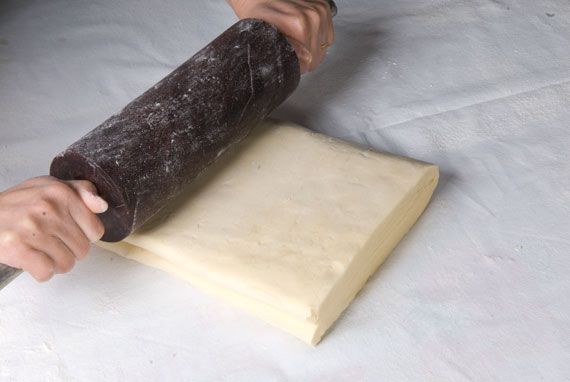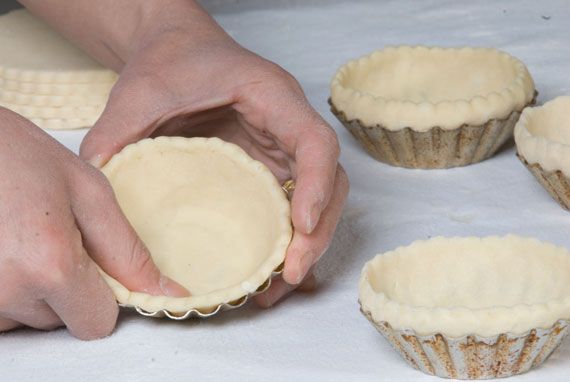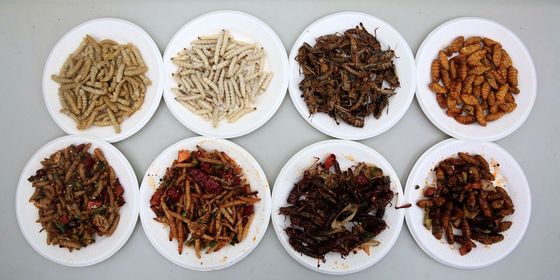Crispy on the outside, gooey on the inside, egg tarts are universally loved for good reason
Its very name—an amalgam of Chinese and English, reflects the multicultural origins of one of Hong Kong’s most loved dim sum (点心 diǎnxīn). The “dan tart” (蛋挞 dàntà, egg tart) is the unofficial foodie mascot for a city that is home to some of the finest Michelin-starred holes-in-the-wall in Asia. The tiny pastries are devoured in Cantonese restaurants from as far afield as Sydney and Toronto.
The delectable sweet’s true origins are a mystery. The dan tart’s genesis could be a Hong Kong adaptation of the British custard tart. Or, even more likely, it’s a Macau remake of the still popular Portuguese egg tarts. Colonial history aside, we know for sure that some form of egg tart existed in China prior to contact with the West.
Egg tarts made their first recorded appearance in a banquet for Emperor Kangxi. The “Manchu-Han Imperial Feast” (满汉全席 Mǎn Hàn Quán Xí)—one of the most lavish meals documented in Chinese culinary history—featured the tarts as one of the “Thirty-two Delicacies.” The eating went on for days.
The tart is no simple matter. Fans can choose between two delicious schools of pastry making. While the unctuously smooth yet wobbly yellow center stays constant, the pastry shell appears either in shortcrust form (for a firmer biscuit-like taste) or in a flaky, lardy thousand-layer form (the more well-known version). Whichever side of the pastry fence you sit on, the joy of dan tarts lies in eating them hot out of the oven. The ephemeral pleasure only adds to their appeal—you must eat them on the spot, while falling crumbs decorate your shirt. Taking them home is not really an option.
These days, everyone is getting in on the action, with fast food chains like KFC providing delivery to your door for a cheap, hot, and oily, but still satisfying interpretation of the egg tart.
Size matters too for some, it seems. The father and son duo at Duck de Chine—chefs Peter Lam and Wilson Lam—are particular about their dan tarts. Not content with the palm-sized monsters that have been springing up at restaurants around town, Chef Lam junior styles his tart in the mold of petit fours—dainty, bite-sized portions, which are “healthier and more body conscious.” So, you can have your egg tart and eat it too.
Over at popular Hong Kong restaurant chain, Herbal Café, chef “Amei,” as her fellow Cantonese fondly call her, makes exquisite dan tarts while maintaining the restaurant’s principles of authenticity and freshness. The motto here is “less oil, little salt, no MSG,” so it’s natural that the desserts—and main dishes—have become favorites for health-conscious and trendy urbanites. Amei reveals her culinary secrets: “It takes 30% prep work and 70% baking work to make delicious and yummy-looking dan tarts.”
According to Amei, the traditional way to make dan tarts involves rolling oil dough and water dough together to make a two-, even three-hundred-layered pastry shell. Sounds laborious? It’s not so bad. Just try Amei’s simple recipe below. The result, if you prepare well and bake to instruction, is tarts that are fantastically flaky crispy on the outside, smooth and creamy on the inside!
This recipe was taken from Issue 2 of our magazine. For more, visit our magazine page here.
Ingredients
Oil dough 油皮yóupí:
500g lard
猪油 zhū yóu
200g butter
牛油 niú yóu
50g egg
鸡蛋 jīdàn
Water dough 水皮 shuǐpí:
250g flour
面粉 miànfěn
20g butter
25g egg
150ml Water
水 shuǐ
Filling 蛋塔心 dàntǎxīn:
200g egg
20g evaporated milk
淡奶 dànnǎi
50g sugar
糖 táng
200g water
Directions:

- To prepare oil dough: mix ingredients for oil dough and place in refrigerator for 20-30 minutes.
- To prepare water dough: mix ingredients for water dough, roll flat and set aside.

3. Then wrap the oil dough in the water dough. Roll flat and fold in half. Roll flat again and fold in half three times. Roll flat once again and fold in half four times.

4. Roll out the dough flat and thin. Cut using tart cutter. Place into tart molds.

5. To make egg tart filling: Dissolve water and sugar, then mix in all ingredients. Pour through a strainer.

6. Finally, pour the filling into molds to about 70% full. Heat oven to 160 º C-170 ºC. Bake for 15-20 minutes. Enjoy!












